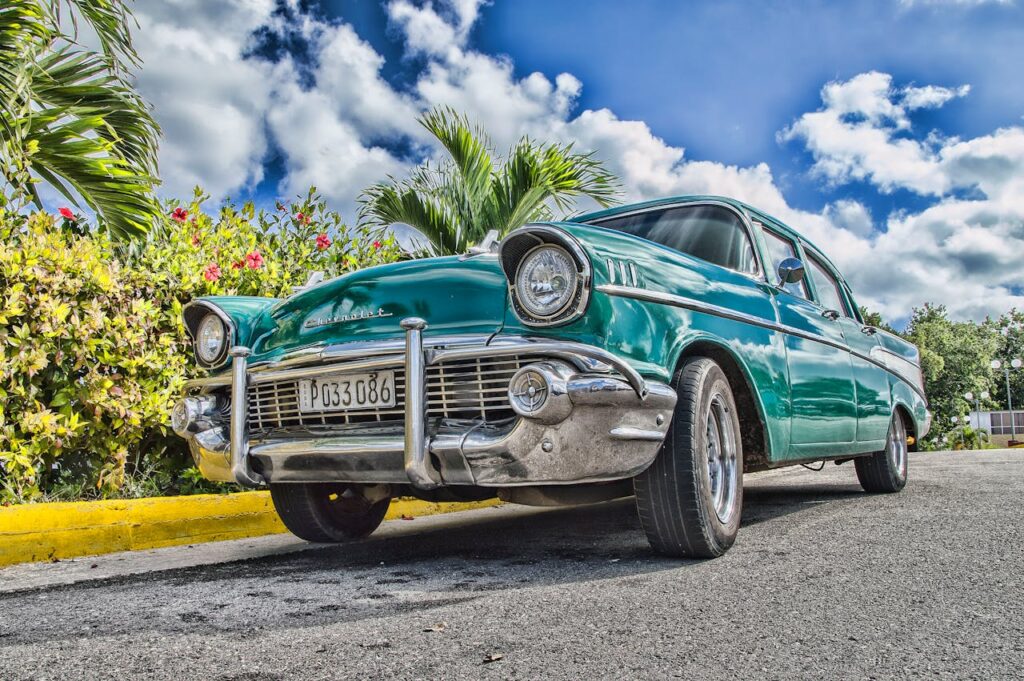Classic cars are more than just four-wheeled vehicles; they are a glimpse into the past, a testament to the evolution of automotive engineering and design. These vintage automobiles have an enduring charm that transcends time, appealing to enthusiasts, collectors, and anyone with an appreciation for the artistry of the open road. Join us on a journey through automotive history as we explore the fascinating world of classic cars.

The Birth of Classic Cars
The concept of classic cars is not restricted to any particular era or make; it encompasses a wide range of automobiles that have left their mark on the automotive industry. Classic cars typically include vehicles manufactured between the late 19th century and the mid-20th century, a period marked by significant technological advancements and design innovations.
One of the earliest classic cars is the Benz Patent-Motorwagen, produced in 1885 by Karl Benz, considered the first true gasoline-powered automobile. This pioneering vehicle set the stage for the rapid development of the automotive industry, leading to the production of iconic classics like the Ford Model T and the Rolls-Royce Silver Ghost.
The Golden Age of Classic Cars
The interwar period, roughly from the 1920s to the 1930s, is often regarded as the “Golden Age” of classic cars. This era saw the emergence of luxury brands such as Cadillac, Packard, and Duesenberg, which produced extravagant and meticulously crafted automobiles. The classic cars from this period were characterized by their elegant lines, intricate detailing, and powerful engines, making them highly sought-after collector’s items today.
Iconic Classics
No discussion of classic cars would be complete without mentioning some of the most iconic models that have left an indelible mark on automotive history:
- Ford Model T (1908-1927): Often referred to as the “Tin Lizzie,” the Model T revolutionized the automobile industry by making cars affordable for the masses.
- Chevrolet Bel Air (1950-1975): The Bel Air is a symbol of the American dream, known for its sleek design and timeless appeal.
- Volkswagen Beetle (1938-2003): The “Bug” captured the hearts of millions worldwide with its distinctive shape and reliability.
- Jaguar E-Type (1961-1975): Often called the most beautiful car ever made, the E-Type is a masterpiece of British engineering.
- Mercedes-Benz 300SL (1954-1963): With its iconic gullwing doors, the 300SL is a prime example of German engineering excellence.
Classic Cars Today
Today, classic cars have a devoted following of enthusiasts and collectors who meticulously restore and maintain these treasures from the past. Car shows, auctions, and rallies dedicated to classic automobiles provide opportunities for like-minded individuals to come together and celebrate their shared passion.
However, the appreciation for classic cars goes beyond aesthetics and nostalgia. These vintage vehicles represent a rich tapestry of automotive history, showcasing the evolution of technology, design, and engineering. They serve as a reminder of how far we’ve come and how innovation continues to shape the automotive industry.
Conclusion
Classic cars are not just vehicles; they are time machines that transport us to bygone eras of automotive glory. From the early pioneers of automobile manufacturing to the timeless classics of the mid-20th century, these vehicles have an enduring appeal that transcends generations. Whether you’re a seasoned collector or simply someone who appreciates the artistry of a well-crafted automobile, the world of classic cars offers a fascinating journey through automotive history that is well worth exploring.


